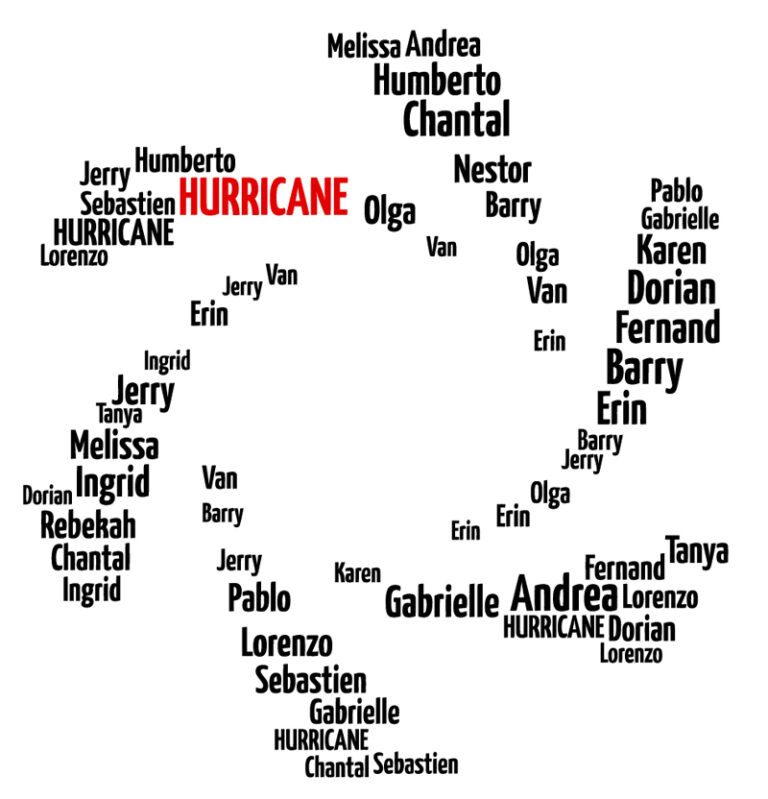by Erin SILVER
It’s hard to choose the perfect name for a child, but when it comes to hurricanes, it’s all planned out long in advance by the World Meteorological Organization.
Since these storms occur every year, some at the same time, weather experts agreed that having human names for each one would avoid confusion and enable everyone to better communicate. Each season, 21 names are chosen according to the Greek alphabet. Names are chosen in chronological order, so Albert would be before Bob. There are six lists of names that rotate every six years. The names of very bad storms are retired. In 2017, Harvey, Irma, Maria and Nate were removed from the list. They were replaced with Harold, Idalia, Margot and Nigel. Names starting with Q, U, X, Y and Z aren’t used. You know it’s a bad storm season when you run out of names and have to start at the beginning. That happened in 2005, when the season ended with a tropical storm named Alpha.
Interestingly, the names chosen have to be simple and easy for the people of the affected area to pronounce. That’s why Atlantic storm names include names familiar to Caribbean people, such as Cristobal and Edouard. Storms that affect Hawaii, for instance, will have Hawaiian names like Moke and Walaka.
When hurricanes were first named in the Atlantic, a practice that began several hundred years ago, they were named after Roman Catholic saints. If there were two hurricanes, they could be named Hurricane San Filipe the First and Hurricane San Felipe the Second. When meteorology was new in the United States, storms were named according to the longitude and latitude coordinates where they began. These were impossible to remember and errors were made. During the Second World War, military meteorologists began to use women’s names. The system was easy and adopted in 1953 by the National Hurricane Centre for stories originating over the Atlantic ocean. This continued until the women’s movement, when men’s names were finally added to the list by 1979.
“Women are human beings and deeply resent being arbitrarily associated with disaster,” reads one 1970 protest letter sent to the U.S. National Weather Service by the National Organization for Women.
Now, it’s more equitable. During even-numbered years, so 2022 and 2024, for instance, men’s names are given to the odd-numbered storms, like 1, 3 and 5. During odd-numbered years, like 2023 and 2025, women’s names are given to odd-numbered storms.
If you’re ever competing in hurricane trivia, you will surely have your opponent’s number and know all the names!

